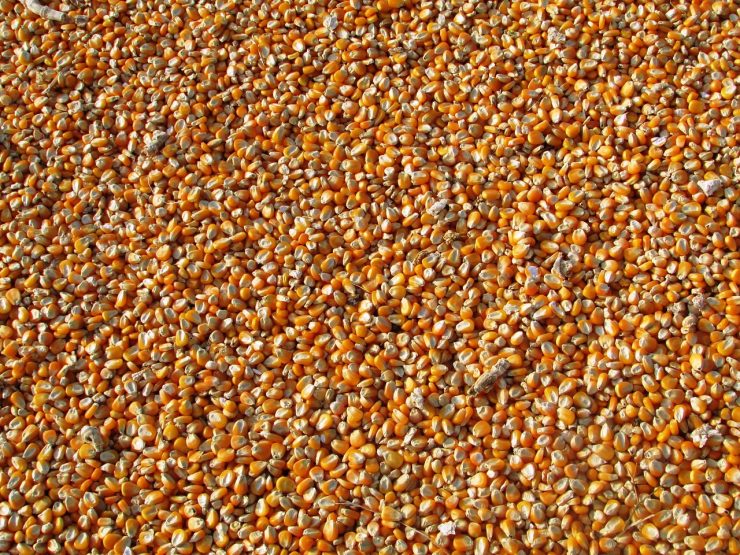What Is Glyphosate, and Why Is It Everywhere?
Glyphosate is best known as the main ingredient in Roundup, a popular weed-killer first introduced by Monsanto in the 1970s. It hit the market in 1974 and quickly became one of the most widely used herbicides in the U.S.—and eventually, the world. Today, it’s used just about everywhere: on lawns, golf courses, parks, farms, and even cemeteries.
Its popularity among farmers skyrocketed with the introduction of genetically modified (GMO) crops in the mid-1990s. These “Roundup Ready” crops were engineered to tolerate glyphosate, allowing it to be sprayed across entire fields without damaging the actual crop. Over time, the use of glyphosate expanded dramatically. In fact, of the 18.9 billion pounds used globally since 1974, nearly three-quarters has been applied in just the past decade.
Not Just for GMO Crops Anymore
Interestingly, glyphosate isn’t just used on GMO crops. It’s also sprayed on non-GMO grains like wheat, oats, and barley shortly before harvest to speed up drying. This practice, known as desiccation, allows for earlier and more efficient harvesting—especially helpful in damp climates. However, this also means crops are often harvested just days after being heavily treated with glyphosate, increasing the amount that lingers on food.
This pre-harvest application has expanded to include crops like lentils, peas, flax, rye, corn, canola, and even sugar beets and potatoes.
Rising Concerns About Health Risks
Glyphosate was once considered safe. In fact, earlier studies—including a 2000 publication in Regulatory Toxicology and Pharmacology—didn’t raise major red flags. But more recent research has challenged that perception. Scientists now believe glyphosate exposure may be linked to serious health concerns, including:
-
Autism
-
Non-Hodgkin lymphoma
-
Food allergies (including celiac disease)
-
Parkinson’s, Alzheimer’s, and multiple sclerosis
-
Obesity, diabetes, and reproductive issues
-
Liver dysfunction
The conversation around glyphosate intensified in 2015 when the World Health Organization’s International Agency for Research on Cancer (IARC) classified it as a “probable human carcinogen.” This designation came after findings that glyphosate could cause DNA and chromosomal damage in human cells.
Legal and Regulatory Pushback
Since then, glyphosate has been the subject of numerous lawsuits—more than three dozen in California alone—by people claiming Roundup contributed to their non-Hodgkin lymphoma. In 2016, the U.S. Environmental Protection Agency (EPA) planned a risk assessment of glyphosate, though the process was delayed, in part, by lobbying efforts from the agriculture industry.
Meanwhile, both U.S. and European regulators continue to reevaluate glyphosate’s safety.
Glyphosate and the Gut Microbiome
In addition to the cancer concerns, glyphosate appears to disrupt the gut microbiome—killing off beneficial bacteria while allowing harmful microbes to thrive. It also binds to vital minerals like iron, copper, and manganese, creating deficiencies. This has led to a growing body of research linking glyphosate exposure to digestive issues, nutrient imbalances, and even neurological conditions tied to serotonin and thyroid hormone disruption.
Some experts, including MIT scientist Dr. Stephanie Seneff, believe glyphosate contributes to the rising prevalence of gluten and other food sensitivities. When glyphosate binds to proteins like gluten in the digestive tract, it may make them even more allergenic.
What Foods Contain Glyphosate?
It’s not just the obvious suspects like corn and soy. Glyphosate residues have been detected in a wide range of foods—many marketed as “healthy” options. Tests have found glyphosate in:
-
Cheerios and Honey Nut Cheerios
-
Ritz crackers and Stacy’s Pita Chips
-
Oatmeal cookies and granola bars
-
Infant formula, snack chips, and even organic cereals
A 2016 lab test by Anresco Labs revealed concerning glyphosate levels in many popular foods, raising alarms among parents and health advocates.
How to Reduce Exposure
Unfortunately, glyphosate is difficult to avoid completely. It’s found in air, rainwater, soil, and even breast milk. Still, there are steps that can help minimize exposure:
-
Choose organic foods whenever possible—especially grains and legumes
-
Avoid processed foods unless they’re labeled 100% organic
-
Look for meat, eggs, and dairy from grass-fed or organically raised animals
-
Eat more fermented foods (like sauerkraut, yogurt, and kombucha) to support gut health
-
Include sulfur-rich foods like eggs, garlic, and onions
-
Supplement with nutrients like glutathione, manganese, and vitamin D3 if needed
-
Spend time in the sun to boost natural vitamin D levels
Final Thoughts
While avoiding glyphosate completely may not be possible, making informed food choices can go a long way. Eating organic, supporting local farmers, and sticking with whole, unprocessed foods may help reduce overall exposure. In the face of widespread use, taking personal steps to limit contact with glyphosate remains one of the most practical ways to protect long-term health.











